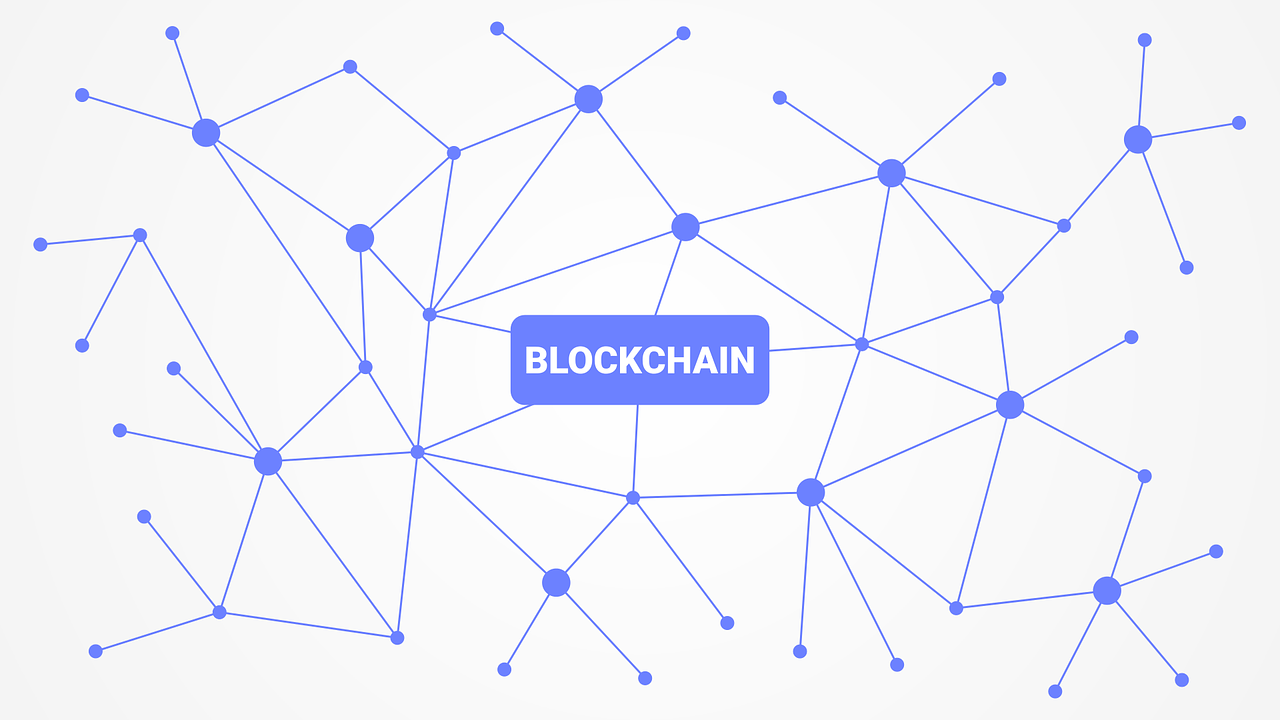Blockchain technology has been making waves across various industries, from finance to healthcare, for its potential to revolutionize processes and enhance security and transparency. In recent years, it has also begun to have a significant impact on legal processes. In this article, we will delve into the intricate ways in which blockchain is transforming the legal landscape, from the management of intellectual property to the integration of artificial intelligence and machine learning for predictive analytics.
Understanding Blockchain
What is Blockchain?
At its core, blockchain is a distributed ledger technology that enables the secure recording and verification of transactions across multiple nodes or computers. Unlike traditional centralized systems, where a single entity has control, blockchain operates on a decentralized network, making it highly resistant to fraud and tampering. Each transaction, once recorded in a block, is immutable and linked to the previous one, creating a chain of data.

Key Features of Blockchain
- Decentralization: Blockchain is not controlled by a single entity, making it more resistant to manipulation and hacking.
- Immutability: Once data is recorded on the blockchain, it cannot be altered, ensuring a high level of data integrity.
- Transparency: Transactions on the blockchain are visible to all participants, enhancing trust among parties.
- Security: Advanced cryptographic techniques ensure the security of data on the blockchain.
- Smart Contracts: Self-executing contracts that automate and enforce predefined terms and conditions.
Blockchain and Legal Processes
Intellectual Property Management
Protecting Intellectual Property
One area where blockchain has had a significant impact is in the management and protection of intellectual property (IP). Intellectual property encompasses patents, trademarks, copyrights, and trade secrets, all of which require rigorous protection. Blockchain’s attributes are particularly well-suited to this task:
- Timestamping: Blockchain allows creators to timestamp their work, providing irrefutable proof of when a particular creation came into existence. This can be crucial when establishing ownership and copyright.
- Immutable Records: Intellectual property records stored on a blockchain cannot be altered or deleted. This ensures the preservation of evidence in case of disputes.
- Smart Contracts: Smart contracts can automate royalty payments and licensing agreements, reducing the risk of infringement and ensuring that creators are fairly compensated for their work.
Fighting Counterfeiting
Counterfeiting is a major concern for companies across industries. Blockchain can be used to track the provenance of products and verify their authenticity. Each product can be assigned a unique identifier that is recorded on the blockchain, allowing consumers to trace the product’s journey from production to sale. This level of transparency makes it extremely difficult for counterfeiters to infiltrate the market.
Legal Documentation and Contracts
Smart Contracts
Smart contracts are self-executing contracts with predefined rules and conditions. They automatically execute actions when the specified conditions are met. In the legal realm, smart contracts have the potential to revolutionize contract management:
- Automated Enforcement: Smart contracts eliminate the need for intermediaries and can automatically enforce contractual obligations, reducing the risk of disputes.
- Cost Savings: By reducing the need for legal intermediaries, businesses can save significantly on legal fees.
- Transparency: All parties involved in a smart contract can view the terms and conditions, ensuring transparency and reducing the likelihood of misunderstandings.
Immutable Legal Records
Legal documents and records are typically stored in centralized databases, which can be susceptible to data breaches and tampering. Storing legal records on a blockchain ensures their immutability and security. This is particularly valuable for wills, property deeds, and other critical documents.
Dispute Resolution
Transparency in Dispute Resolution
Transparency is the cornerstone of a fair and just dispute resolution process. In traditional legal proceedings, gathering evidence and establishing the sequence of events can be a time-consuming and contentious process. However, blockchain’s inherent transparency changes the game entirely. When a dispute arises, every relevant transaction, communication, and interaction can be securely recorded on the blockchain. This creates an immutable and tamper-proof trail of evidence that all parties involved can access.
Imagine a scenario where two parties are in dispute over a contractual agreement. By accessing the blockchain, both parties can independently verify the terms of the agreement and the history of transactions related to it. This eliminates the need for protracted debates about the validity of the contract or the sequence of events leading to the dispute. As a result, legal professionals and mediators can focus their efforts on resolving the core issues of the dispute, rather than getting bogged down in evidentiary battles.
Furthermore, the transparency offered by blockchain also reduces the potential for dishonesty or fraud during the dispute resolution process. Parties are less likely to make false claims or tamper with evidence when they know that their actions are being recorded in an immutable ledger. This not only expedites the resolution but also promotes trust and integrity in the entire legal process.
Online Dispute Resolution (ODR)
Online Dispute Resolution (ODR) is a rapidly growing field that leverages technology to resolve disputes efficiently and cost-effectively. Blockchain adds a layer of security and transparency to ODR that can be transformative. When parties engage in ODR on a blockchain-based platform, they are participating in a process that is inherently secure and verifiable.
Smart contracts are the linchpin of blockchain-powered ODR. These self-executing contracts are designed to automatically enforce predefined rules and conditions. In the context of dispute resolution, smart contracts can be programmed to act as impartial mediators. When a dispute is initiated, the smart contract can analyze the terms of the agreement, review the evidence stored on the blockchain, and render a decision based on the predetermined rules.
This automation not only expedites the resolution process but also reduces the need for costly legal intermediaries. Parties can have confidence that the decision rendered by the smart contract is based solely on the contract terms and evidence, without bias or human error. This approach not only makes ODR more accessible to individuals and businesses but also streamlines the entire dispute resolution landscape, leading to quicker and fairer outcomes.

Integrating Artificial Intelligence and Machine Learning
Synergy with AI and ML
The integration of blockchain with artificial intelligence (AI) and machine learning (ML) is a powerful combination that holds immense potential for the legal field. Here’s how these technologies can work together:
Data Analysis and Predictive Analytics
AI and ML algorithms can analyze the vast amount of data stored on the blockchain to provide valuable insights. Predictive analytics can help legal professionals anticipate legal trends, case outcomes, and potential risks. For example, AI-powered tools can analyze historical case data to predict the likely outcome of a new case, allowing lawyers to make informed decisions.
Enhanced Security
Blockchain’s security features can enhance the protection of sensitive legal data used in AI and ML applications. This is particularly important when handling confidential client information and case details.
Smart Legal Research
AI-Powered Legal Research
Blockchain can also improve the efficiency of legal research. AI-powered search engines can use blockchain data to provide more accurate and up-to-date legal information, making it easier for lawyers to find relevant case law, statutes, and precedents.
Challenges and Considerations
Regulatory Concerns
The disruptive potential of blockchain technology has not gone unnoticed by regulatory bodies worldwide. As blockchain becomes increasingly integrated into legal processes, regulators are faced with the challenging task of adapting existing laws and regulations to this transformative technology. One of the foremost concerns on their agenda is data privacy. Blockchain’s transparency, while advantageous for many applications, can raise issues related to the protection of sensitive personal data. Regulators are working to strike a balance between the benefits of transparency and the need for data protection, crafting regulations that allow for secure data handling on the blockchain.
Another critical regulatory challenge revolves around the legality of smart contracts. While these self-executing contracts offer incredible efficiency and automation, their legal status varies from jurisdiction to jurisdiction. Regulators are actively considering how to recognize smart contracts under the law and establish a framework for their enforcement. This process requires a deep understanding of both blockchain technology and legal principles, and regulators are working closely with legal experts to bridge this gap.
Jurisdictional challenges pose yet another regulatory hurdle. Blockchain operates on a global scale, making it difficult to apply traditional territorial jurisdiction. Regulators are exploring how to define the jurisdiction for blockchain-related disputes and establish international agreements that facilitate cross-border cooperation. These efforts are essential to ensure that legal processes on the blockchain are enforceable and that participants have clear legal recourse in case of disputes.
Adoption and Education
The legal profession has a reputation for being conservative when it comes to adopting new technologies. However, to fully realize the benefits of blockchain in the legal field, it is imperative that legal professionals embrace this innovative technology. This transition requires not only adoption but also education. Legal practitioners must be educated about blockchain’s potential and how to integrate it into their practices effectively.
One of the primary reasons for resistance to change in the legal profession is a lack of understanding. Many legal professionals are unfamiliar with the intricacies of blockchain technology, including how it works, its security features, and its various applications. To address this knowledge gap, training programs and initiatives are essential. Law schools, bar associations, and professional organizations should collaborate to develop comprehensive blockchain education programs.
Additionally, interdisciplinary collaboration between legal experts, technologists, and blockchain developers can facilitate a smoother transition. Legal professionals must learn how to leverage blockchain’s transparency, security, and smart contract capabilities to streamline legal processes, enhance client services, and reduce costs. As they gain proficiency in blockchain technology, legal practitioners will be better equipped to advise their clients on blockchain-related legal matters and participate in the development of blockchain-based legal solutions.
Scalability and Interoperability
Blockchain’s potential to transform legal processes depends on its ability to handle the growing volume of legal data and transactions efficiently. Scalability is a critical concern that must be addressed for blockchain adoption to reach its full potential in the legal field. As more legal documents, contracts, and records are stored on the blockchain, the network must be able to accommodate this influx without compromising performance or security.
Interoperability is another crucial consideration. Different blockchain platforms have emerged, each with its own protocols and standards. Achieving interoperability between these platforms and legacy legal systems is essential for widespread adoption. Legal professionals need to be able to seamlessly integrate blockchain into their existing workflows and communicate with other parties who may use different blockchain solutions.
To overcome scalability and interoperability challenges, blockchain developers and legal experts must collaborate closely. They need to explore solutions that can increase the capacity of blockchain networks, enhance transaction processing speed, and develop interoperability protocols that allow different blockchain platforms to communicate effectively. As these technical challenges are addressed, blockchain’s role in the legal field will continue to expand, ushering in an era of greater efficiency and transparency in legal processes.

Conclusion
Blockchain’s impact on legal processes is profound and multifaceted. From protecting intellectual property to automating contract enforcement and facilitating dispute resolution, this transformative technology is reshaping the legal landscape. When combined with artificial intelligence and machine learning, blockchain opens up new possibilities for data analysis and predictive analytics. However, challenges such as regulatory concerns and adoption hurdles must be addressed for the legal profession to fully harness the potential of blockchain. As the technology continues to evolve, its role in the legal field will only become more prominent, ushering in a new era of transparency, efficiency, and security.

